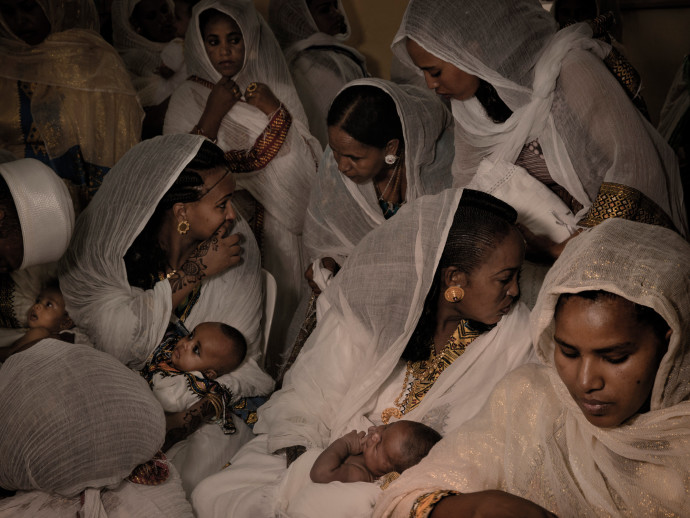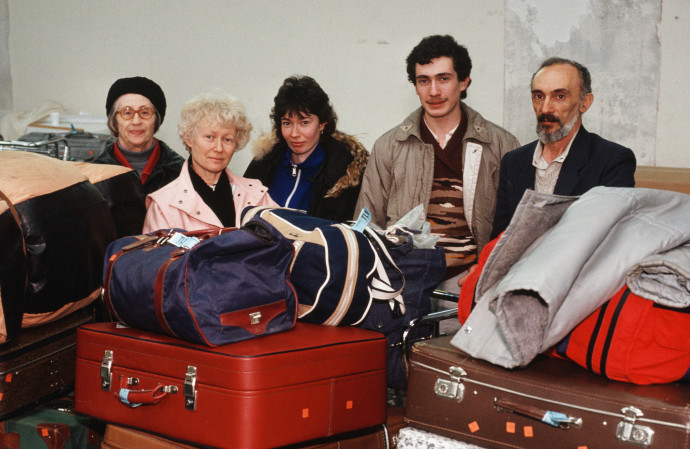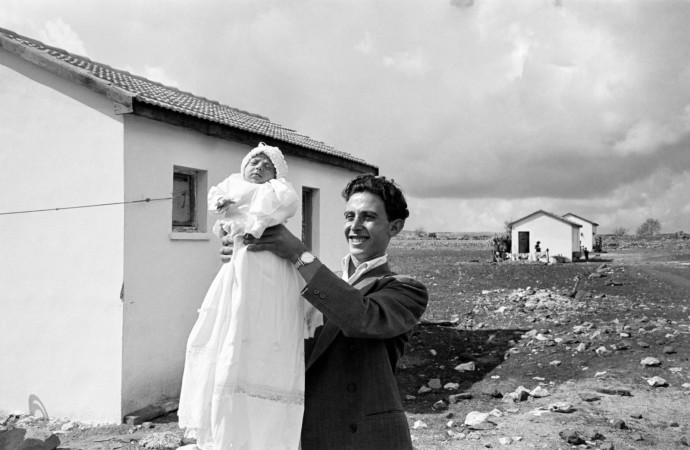When legendary war photographer Robert Capa arrived in Israel in May 1948, the horrors witnessed in Europe over the previous two decades were still before his eyes. Therefore, his feelings of hope and excitement about the establishment of the Jewish state were clearly conveyed through his work.
Some of those epic pictures are one of the highlights of the exhibition celebrating Israel’s 75th anniversary that will be inaugurated at the Museum of Tolerance Jerusalem on April 28. The inauguration will be part of the conference “Celebrate the Faces of Israel,” organized by The Jerusalem Post in cooperation with the museum.
“Robert Capa was a Jewish photographer from Hungary. His family was murdered in the Holocaust,” said Anna-Patricia Kahn, the curator of the exhibition. “When he came to Israel to photograph this new country, blooming out of the ashes of history, he was enthusiastic. And you can feel it by looking at the images.”The exhibition is the first to be presented in the Museum of Tolerance, which will inaugurate its permanent exhibition in 2024.

“There are several reasons behind the decision of choosing photography as the first form of art exhibited in the museum,” said Yves Kugelmann, a member of the Board of Trustees at the Anne Frank Fonds and producer of the exhibition.
“In Jewish culture, there is no great tradition of painting; but in the 20th century, when photography becomes a prominent form of art, there is an explosion of Jewish photographers, starting with Capa and David Seymour. Together, they founded the legendary Magnum Agency and became icons,” he added. “There is something very Jewish in the importance of witnessing history.”
The exhibition includes more than 120 images by 12 artists from Israel and abroad.
“For a long time, Israel was the country with the highest number of foreign journalists in the world,” Kahn said. “It is fascinating to see how both local and international photographers have portrayed the country throughout the decades.”
The power of pictures is to be able to encapsulate a full story within a single image, the curator explained. “When you look at a good picture, you will learn a lot about what it was and what it will be,” she said. According to Kahn, that is why the images by Capa are important. “I think that when you look at them, you understand something about the history and soul of Israel that it is still relevant today, some 75 years later,” she said.
Kugelmann stressed that photography is a powerful medium, but it can also be manipulative. The photographers who are exhibited, however, were truly able to capture meaningful stories in one individual image, offering a point of view and often giving a voice to people who were not able to speak for themselves.
“Photography is fascinating, but it can be dangerous because a photographer can choose to be manipulative,” he said. “The artists we selected are the best in the world. In their work, they balanced, documented, witnessed, and also had a point of view. They did not take pictures for artistic purposes. But in the end, the quality of their work was such that their images are part of the way we look at history.”
The display will also present photos by Sigalit Landau, who is known for her artwork depicting objects encrusted in Dead Sea salt.
“More than a photographer, Landau is an artist, but we chose to include her images because she very much embodies the 21st-century idea of telling stories through a combination of techniques, images, videos and installations,” Kugelmann said. “The world of photography has changed in the past decades, and we wanted to bridge the gap between the old days of taking black-and-white pictures and contemporary work.”
The exhibition will also feature images by Inge Morath, one of the first female photographers to work for Magnum.While recently preparing a retrospective on Morath, Kahn found out that the photographer had visited Israel with her family in the 1950s.
“I spent several nights going through her archive, and I found images that had never been published before,” she said.
Images by young contemporary Israeli artists, such as Benyamin Reich, will also be on display. Reich, who was raised in an ultra-Orthodox family in Bnei Brak, went on to study at the École des Beaux-Arts in Paris. His photograph Abba (Dad) depicts his father wearing typical ultra-Orthodox garments, lying on a very basic bed in a wide and dilapidated hall. By conveying tenderness, hope and melancholy, it is an image that embodies all the challenges and beauty of contemporary Israel.
Kugelmann emphasized that an essential feature of the exhibition’s pictures is that they put humans at the center of the image, which is also very much in line with the mission of the Museum of Tolerance – an institution that aims to promote dialogue and coexistence in a region in which this does not always come easy.
“These pictures were taken by both Jewish and non-Jewish artists, and they represent all types of people in Israel – Arab, Druze, religious, secular,” he said. “In a world that is more and more digitized, we want to offer our visitors the space of an analogical exhibition to really look at the images and understand the different faces of Israel.”
This article was written in cooperation with the Museum of Tolerance.


